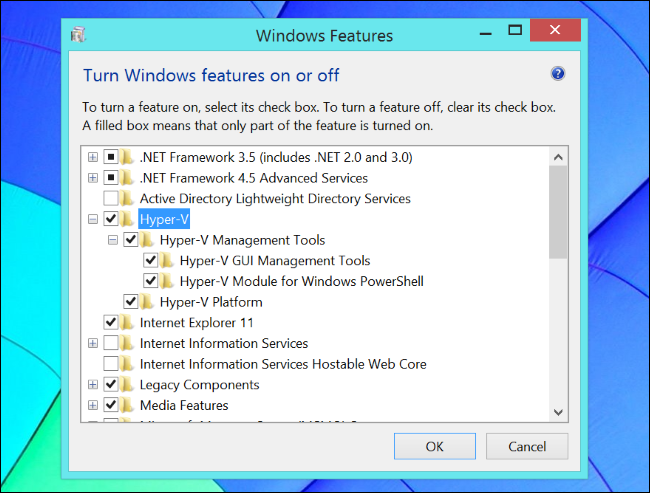

So, I add Routing services to Server1, figuring I would just configure the ‘virtual’ network w/ NAT or as a direct LAN-to-LAN connection, but this doesn’t seem to be working. But, I don’t want to add the External switch to Server2 – I wan’t to configure it so I can test the firewall / RAS / VPN / Etc, so any access (other than the HyperV management connection) would have to route through Server1, just as if it was a server out on the net (I may end up setting up a separate RAS server, since I don’t think it’s actually best practice to have these services on a DC). It seems to be getting the IP config from the DHCP server on Server1 (10.x.x.x range) and can see Server1, so no problem there. Server2 (will eventually be SQL Server) currently only has the Private Switch assigned. This all seems OK, and Server1 has internet access. The Private vAdapter (as seen by Server1) gets assigned a static IP, and Server 1 is also a DHCP and DNS server for the ‘virtual’ domain.


I created a Private and an External Switch and assigned both to Server1. This is exactly the scenario that I was attempting.
#Hyper v manager internet windows 10#
Managing the Hyper-V Default Switch in Windows 10 version 1709 and higher with PowerShell: Category: Hyper-V Tags: Hyper-V, Network, Virtual switch, lab, DHCP

#Hyper v manager internet download#
Alternatively, configure the settings by GPO.ītw, Microsoft provides an excellent lab with DC, DHCP, DNS, SCCM, MDT and many other installation as download on On workstations, open Control Panel, select System, go to the Remote tab and select Allow remote connections to this computer. To allow RDP on servers, open the Server Manager, select Local Server and set Remote Desktop to on. The configuration gives you the option use RDP connections from your host computer which are more comfortable than Hyper-V connection. To my experience, this prevents the virtual switch from degrading the speed of physical adapter (you may check before and after the configuration to be sure). In case your host is running on Windor later, you should use the default switch that is already preconfigured (mind that you find an adapter vEthernet (Default Switch) in the list of Network adapter of your device). Create a second network adapter for each machine in the lab that needs internet access. Click Add Hardware and select Network Adapter. Right-click the virtual machines and select Settings. Create an internal and an external virtual switch in the Virtual Switch Manager in the right pane of your Hyper-V management console. If the machine takes the external address it may not see the other machines in your lab.Ī possible workaround is to create two virtual adapters: The first one to connect the machines internally, the second one to grant them internet access.ġ. In case it takes the internal address you don’t have internet access. The issue is that your machines can either get an IP address from the DHCP server in your environment or from your router. If you are running a virtual environment with a DC and DNS server you are likely to encounter a problem with the internet connection or the network connection between your machines.


 0 kommentar(er)
0 kommentar(er)
